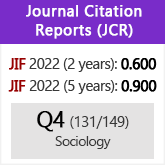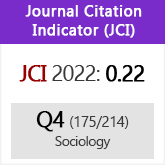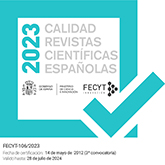Cambios en las pautas de fecundidad de la comunidad de Madrid. Los procesos de inmigración como factor explicativo
DOI:
https://doi.org/10.3989/ris.2002.i32.719Keywords:
Fecundity Index, Immigrant Population, Population Survey, Birth Survey, Comunidad de MadridAbstract
This article analyzes the changes observed in the fecundity index in the Communidad de Madrid (CM), which began to grow slowly after 1995, in contrast to prior trends. After an analysis of the basic birth trends that are occurring in CM, the article considers two altemative explanatory factors: the changes observed in the age composition of fertile females, their dififerences in terms of fecundity, and the size of the immigrant population and their reproductive behavior. The conclusions indícate that, despite the fact that the immigrant population is playing an important role in the increase in the birth rate in Madrid, it is not the only factor that should be taken into account. Women in Madrid between the ages of 30 and 39 years, having delayed their reproductive decisions at an earlier age, are actually deciding to have children, increasing the fecunidity rate of this cohort.
Downloads
Download data is not yet available.
Downloads
Published
2002-08-30
How to Cite
Cebrian, I., Iglesias, C., Moreno, G., & Llorente, R. (2002). Cambios en las pautas de fecundidad de la comunidad de Madrid. Los procesos de inmigración como factor explicativo. Revista Internacional De Sociología, 60(32), 125–153. https://doi.org/10.3989/ris.2002.i32.719
Issue
Section
Notes
License
Copyright (c) 2018 Consejo Superior de Investigaciones Científicas (CSIC)

This work is licensed under a Creative Commons Attribution 4.0 International License.
© CSIC. Manuscripts published in both the printed and online versions of this Journal are the property of Consejo Superior de Investigaciones Científicas, and quoting this source is a requirement for any partial or full reproduction.All contents of this electronic edition, except where otherwise noted, are distributed under a “Creative Commons Attribution 4.0 International” (CC BY 4.0) License. You may read here the basic information and the legal text of the license. The indication of the CC BY 4.0 License must be expressly stated in this way when necessary.
Self-archiving in repositories, personal webpages or similar, of any version other than the published by the Editor, is not allowed.

















